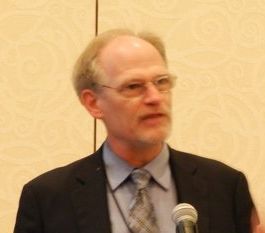With the relaunch of ProVideo Coalition this year, we rolled DAM Coalition into a channel on PVC that focuses on workflow, storage and archive in media and entertainment. It was an opportunity to create relevant content for regular readers of PVC while also highlighting some of the more technically minded professionals from different areas of media & entertainment for the benefit of our current and expanded audience.
The relaunch of ProVideo Coalition this year presented us with the opportunity to roll DAM Coalition into a channel on PVC that focuses on workflow, storage and archive in media and entertainment. It was a chance to create relevant content for regular readers of PVC while also highlighting some of the more technically minded professionals from different areas of media & entertainment for the benefit of our current and expanded audience.

With the Creative Storage Conference just around the corner, we wanted to talk to him about how 4K content is impacting storage capacities, the biggest challenges he’s seeing people run into, what sort of professional will get the most out of the conference and plenty more.
ProVideo Coalition: In a previous article that focused on production workflows, it was mentioned that a report you authored said that in ten years a movie will be producing an exabyte of data. Why is that significant?
Tom Coughlin: High end movies today can generate several petabytes of content, so approaching an exabyte of content in ten years, means at least a several hundred times increase in content capacity for a very large project.
Is most or all of this due to 4K/8K content?
This increase is due to several projected factors. These include moving to 4K and 8K content, higher frame and more bits per pixel (e.g. due to greater color depth) as well as more cameras per project. It is even possible that within 10 years very high end projects could combine the content from multiple cameras to create a way to view content from any point of view within the captured region (this is often called a free viewpoint image). These factors could increase the total content capacity created and is the basis of my estimate that we could see creative projects that generate close to an exabyte of raw content within 10 years.
What are the biggest challenges that you’re seeing people encounter when it comes to storage and archive in 2015?
Managing and finding content plus to speed of retrieval of content. These higher resolution, higher frame rate images require very high bandwidth data rates that need advance networking and storage system to support. This is driving demand for flash memory in content capture, editing and content delivery while the higher total stored capacities are driving demand for cost effective HDD, tape and optical disc storage. For many facilities archives are active archives rather than passive repositories. Thus data in the “archive” is more like a content library that is expected to provide content quickly for remonetization and use. Managing and finding this content requires advanced asset management and metadata standards. Activities such as those in SMPTE are developing important metadata standards for content creation and post-production as well as archiving and commercial products are providing advanced end-to-end workflow asset management.
The scales that people are working at seem to be a major factor in this entire conversation. When it comes to storage and archive, what sort of difference is an editor working in a studio environment looking at when compared to a freelancer?
In today’s world even a free-lancer can have access to advanced tools either in his workstation or in the cloud. These allow special effects and editing tricks that were only possible on very expensive systems in the past. Access to services such as rendering, in the cloud give independents the power to rent rather than own the special facilities that they might need for their video projects. On the other hand larger studios have different challenges as they must support multiple projects, often at the highest resolution, frame rate and with lots of cameras. These facilities must be able to deal with the very high bandwidth required to work with this huge concurrent work. At the same time both independents and studios often farm out collaborative projects through the cloud that allow them to work on projects around the clock and access talent where ever it is. In both independent and studios the overall storage capacity and storage bandwidths are increasing as is their need to work with storage in the cloud.
Do professionals need to change the way they think about storage and archive, or is it more about making some necessary adjustments?
Increasing, except for disaster recovery and deep archives, modern active archives are really content libraries that will often require tiers of storage technology to balance the total costs for storing content for a long time versus the requirements to access that content when it is needed.
How is flash memory impacting the industry?
Flash memory is used as the storage media in the majority of professional video cameras today. Performance requirements are driving some use of flash memory in post production, content delivery and even some archive functions. As the costs per capacity of flash memory go down their applications and use will increase.
What role do you see storage and archive playing in terms of distribution?
Many modern storage “archives” are actually active archives that effectively serve as content libraries for remonetization. Besides that as the size and amount of content increases the storage capacity and performance required for content distribution are increasing, even with modern HEVC and similar compression technologies.
What advice do you give to M&E professionals who know they need to refine or redefine their approach to storage, but aren’t sure how to go about it?
I advise them to talk with experts on modern storage technologies that they or their company may be working with. There are also many on-line resources talking about developments in these areas. Attending sessions in a conference where storage in media and entertainment is the topic can provide lots of tips.
Speaking of which, I imagine these are just a few of the topics that will be discussed at the upcoming Creative Storage Conference. What else can attendees look forward to learning about?
In addition to finding out the latest in storage and related technology in media and entertainment you can network with other users and also visit leading vendors who will be exhibiting their products and services at the conference. In May we will be posting our agenda for the June 30, 2015 event. The registration is now open.
What session or keynote are you most looking forward to?
All of them. We have sessions on post production, distribution and archiving and storage in the cloud. We will have keynotes by Eric Weaver from the Entertainment Technology Center (ETC) at USC, from Quantum Corporation and from a start up company called Qumulo.
What sort of professional is going to get the most out of the Creative Storage Conference?
This will be of the greatest value to folks who are interested in the products and applications of digital storage in professional media and entertainment. This includes independent professionals as well as those working in larger facilities. These technologies will be a key element in your future success.


